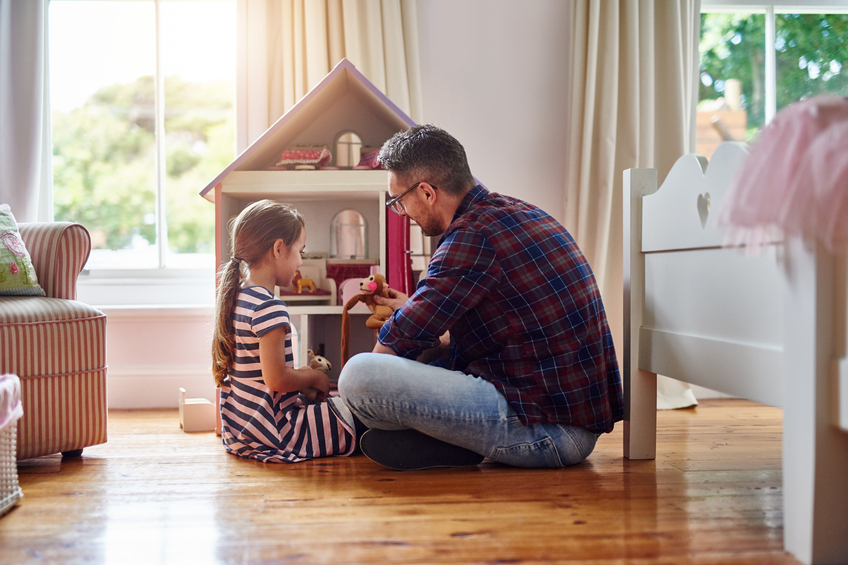We’re not trying to scare you or turn you into an environmental fanatic. Although many of the following recommendations are based on scientific evidence, others are just assumptions. The assumptions are serious, but they’re based on probabilities. The thing to keep in mind is to do your best according to your budget.
Children are in contact with their bedroom floor quite often, so the choice of floor covering is crucial. It’s best not to use vinyl-based covering because it contains PVC, an irritant that can cause allergies. It’s may also cause cancer. If you really want to use it, make sure you ventilate your children’s room as often as possible.
A haven for mites, traditional carpeting is to be avoided. If not, choose carpets with natural fibres. Wool is known for its resistance and durability, two essential qualities given how rough children can be.
Cork is the almost perfect covering. It prevents noise from the bedroom from spreading to the ground floor and doesn’t contain any toxic substances. Natural latex is used as a glue. Some leave it unchanged, while others apply a coat of paint or a biological varnish.
You like wooden floors? Make sure that they’ve been treated with natural products, such as vegetable oils and hard wax. Avoid adhesives with formaldehyde and traditional solvents.
Natural fibre covering is perfect, especially seagrass, which is resistant and durable, like other fibres. It doesn’t absorb stains, unlike sisal and coconut. The perfect anti-slip material, natural rubber absorbs some noise and protects children if they fall.
Linoleum is another almost perfect material. Non-allergenic, antibacterial, antistatic, resistant, durable and easy to clean. Bamboo treated with linseed oil or beeswax is also an excellent choice.
For the walls, opt for natural paint because it doesn’t contain any oil-based product derivatives. Manufactured from plant-based resins, it allows the wall to breathe rather than block the humidity. A plaster coating is the best foundation for paint.
Choose wallpaper that doesn’t contain formaldehyde or PVC. You can find green wallpaper if you shop around a bit.
A burlap or linen canvas is also a good wall cover, even if it’s just for one wall.
Sand-lime brick, whitewashes, stucco and tadelakt are highly recommended to protect a wall while allowing it to breathe.
For the bed, go with linen, biological cotton, cashmere and Alpaga fibre for the fabrics. There are also biological mattresses (wool, cotton, nature latex).
For the furniture, go for solid wood and basketwork like wicker and rattan. Avoid anything that contains PVC and formaldehyde. Melamine as well.

For your children’s health, especially if their bedroom is in the basement, Via Capitale asks you to have your home analyzed. If there is a high rate of radon, you have to take care of it as quickly as possible. The gas is carcinogenic.
Regardless of your choice and your convictions, the best advice that Via Capitale can give you is to air out your child’s room as often as possible.
Reference
La décoration écologique, Marcel Guedj, Fleurus, 2007, 95 pages
Photos: istock.com
